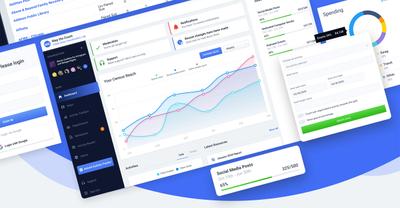Map The Count
reaching hard-to-count populations for 2020 Illinois census
purpose
Map The Count was an initiative started between Urban Data Visualization Lab at University of Illinois Chicago and the Illinois Department Human Services to encourage responses to the 2020 census. To date, hard to count areas had a response rate of 73% or less and historically had been undercounted. To change that trajectory, multiple measures would be put in place 1) more educational resources to the public 2) tools to assess past outreach and 3) a way for census workers to submit and track their responses.
With the census quickly approaching, UDVL approached us to design and build a reporting platform and companion website that would offer information and resources to the public, all working in unison for the goal of calculating the effectiveness of the census efforts.
services
- ui/ux
- community development
- community strategy
- migration
understanding the needs and making a plan
the challenges
With the short timeframe and details still forming, we collaborated closely and frequently with the involved parties, particularly the University of Illinois’ Urban Data Visualization lab, who were absolutely pivotal in seeing the project through successfully.
Since the platform was known but the details were still being formed, we had weekly meetings to keep everyone in sync and updated on all sides of the project. As the project was a moving target, we had our visual team design mockups of the platform’s critical views that would later aid in a large presentation to the Regional Intermediaries, sub-contractors, deputy governor of Illinois, and other public figures.
starting the concept
The reception to the presentation was overwhelmingly positive and feedback was crucial in beginning to narrow down our objectives. The visual team took the conceptual mockups and began to refine them into the final product, focusing on the most critical user journeys. With the quick turnaround, our design and development team needed to work simultaneously in finding areas of improvement, running quality assurance, and testing with the beta group.
organizations involved
designing a platform for better results
platform design
As the visual team moved from concept to final product, we let the user journeys guide the product design. The goal of the platform was to create an intuitive and quick way to input and track data from census outreach efforts. There were three different user journeys to focus on:
- Boots on the ground users that are carrying out the outreach efforts and need to submit their data.
- Regional intermediaries and subcontractors that oversee data collection.
- Project leads and organization heads that need additional oversight, reporting, and moderation tools.
dashboard
A dashboard experience can handle a lot of utility; it acts as one singular place for the most critical of information and an easy way to navigate to other tools of the platform. Both end users, whether an outreach worker or supervisor, are not typically tech savvy. As product designers, we focus on simplicity first in all cases but this project in particular, we needed to mitigate any unnecessary information or actions.
- Based on the usergroup, the dashboard would be user-centric for those that submit the reports and organization-centric for supervisors that needed to get a bigger picture of the whole organization.
- A goal system to track objectives, deadlines, and progress.
- Tips, alerts, and resource links at key points of interaction.
- Graphs to easily show data visualization of outreach activity and efforts.
building a data collection and reporting platform
laying the groundwork
With under two months to execute the platform build, our virtual CTO needed to leverage our resources efficiently and luckily we had spent time previously in building out our own in-house React library that we could get the structure up quickly to focus on the project specific needs.
A unique aspect was finding suitable solutions for how we handled data on the platform. Since the data would be used by the State for high level accountability, there needed to be a robust paper trail. In order to aid in this, we built multiple changelogs to capture everything and a moderation step for admins to approve activity trackers submitted.
One of the challenges was determining who the admins or authorities in the system should be and the control they should have. With hundreds of organizations and a number of users themselves, the correct balance needed to be found between organizations having autonomy but also having a highly reliable dataset for all to use.
map integration
Another data-focused priority for the platform was to ensure the interactive maps used to track outreach progress and provided by UIC Urban Data Visualization Lab were being updated in real-time and in sync with the companion website that was public-facing.
The maps would be reviewed by regional intermediaries, sub-recipients, elected officials, and stakeholders so it was crucial that the platform could handle the data-rich maps accurately and efficiently.

Mike and his team in Audentio were extremely fast and easy to work with. Our organizations partnered well and we all delivered on our very tight deadlines. This was a tough project for many reasons, but working together was a lot easier and we reached our goal in the end. I look forward to partnering with Audentio again!
accessible and informant website for the public
resources
A goal of the initiative was to provide more educational resources to the public and the best way to communicate that was with a companion website to the platform that would be public-facing. The website focused on what the initiative was about, the importance of the census, and resources that could increase awareness to more communities.
We integrated the map tool provided by UDVL but because the maps can be overwhelming and data-rich, we embedded pre-configured maps that are in-sync with the platform and showcase the most relevant data to website visitors.
accessibility
A close second priority to the messaging of the website was accessibility. This included not just utilizing color and typography styles to ensure readability for those with partially impaired vision or color blindness, but also covered writing the markup in a way that a visitor using a screen reader or other alternative browsing device could still access the core information.
Accessibility was tested not only using auditing tools, but also trying to navigate the site ourselves using keyboard-only navigation, screen readers, and even text-only web browsers.
browser support
Another aspect of developing the site was to ensure it functioned well on older browsers. That meant forgoing modern code techniques and utilizing older, well-supported standards in web design and development first. Once the core site layout was coded, we could then add a few more modern layout techniques that would only show up on modern browsers, as long as there wasn’t a dramatic difference in how it looked between the two.
statistics to show progress
the numbers
Once the platform was live, it was time for the involved parties to onboard their organizations and users. The end product focused solely on simplifying the complex and streamlining processes to save any valuable time it could and because of that, it was very exciting for our team to see the work having real community impact.
605
458
41401
For our involvement in the project, Audentio was recognized by the state of Illinois with a Certificate of Appreciation. We are immensely proud of the project and our team’s hyper-focus with the quick turnaround time. We couldn’t have done it without the close collaboration of UDVL and all the organizations apart of the initiative.

The team at UDVL (UIC) connected with Audentio to help build a reporting platform to support and coordinate the 2020 Census outreach efforts around hard-to-count populations in Illinois. These are typically underrepresented people that are less likely to fill out the Census. Lower counts can lead to loss of federal resources and representation in Congress. We helped state officials monitor the progress of their sub-grantees by providing a user-friendly platform to record their outreach activities and submit official reports, and producing raw statistics across across various dimensions and metrics that were then used to map the overall outreach effort against the projected hard-to-count scores across the state and against the actual self response rates from the US Census Bureau. This helped the state work closely with their sub-grantees to ensure the greatest coverage and the highest response rate possible. Audentio was critical in helping to build out the reporting platform in a timely manner. They worked through the end of the year holidays and built the project out in a procedural fashion so that we could onboard users, educate all members involved on how to use the platform, and start reporting information as soon as possible. While this work would normally take about two years to set up, the Map The Count platform was developed and rolled out in the course of a few months with very strict deadlines. Together, our organizations were able to see the job done and are happy to report that the feedback and success with respect to other states has been extremely positive. Despite the COVID-19 pandemic, the state has consistently remained among the top 10 states ranked by response rates. This success can be attributed to the Map The Count platform we developed with Audentio. We are planning to continue this incredibly productive collaboration with Audentio, and extending it to the management of resources during a health emergency like the COVID-19 pandemic and applications of participatory modeling.


